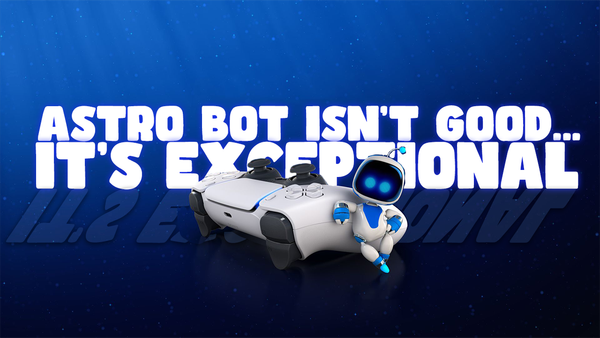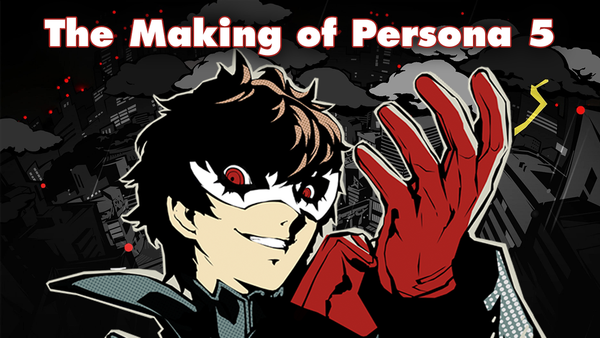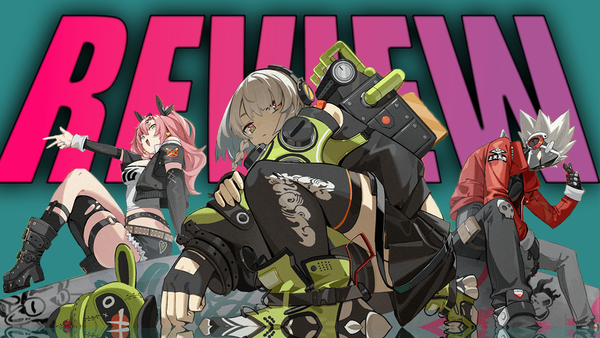Donkey Kong Bananza - Review

Overview
In recent years, the platforming genre has experienced a true renaissance. We’ve seen a wave of creative titles that, while rooted in familiar DNA, have burst onto the scene with bold and inventive ideas—pushing player expression and mechanical creativity to exciting new heights. From Nintendo’s masterpieces like Mario Odyssey, Mario Wonder, and Kirby and the Forgotten Land, to last year’s breakout Game of the Year contender Astro Bot, the now-beloved PS5 mascot. Even co-op experiences like It Takes Two and Split Fiction have shown just how much untapped potential still exists within the genre.
I bring these examples up because so many of them showcase different ways to innovate on player interaction—whether it’s mechanics deeply woven into the foundation of the game, or systems that shift and evolve on the fly. Donkey Kong Bananza takes this spirit of innovation and flips it on its head. It’s a fascinating inversion of what makes modern platformers so satisfying, combining the steady stream of new mechanics, evolving worlds, puzzles, and platforming challenges—but all filtered through a lens of creation. The game isn’t just about moving through a world; it’s about bending, breaking, and reshaping that world to carve your own path forward.
The Bananza Journey
The story of Donkey Kong Bananza takes DK on an unexpected journey to the very core of the planet, joined by his new companion, Pauline. Their goal is to find the legendary Banadium Core—a source of immense power that can grant wishes. For Pauline, it’s the hope of returning home; for DK, it’s something far simpler: an endless supply of bananas.
What makes this duo shine is their chemistry. DK’s strength and playfulness paired with Pauline’s determination and wit create a dynamic that feels fresh yet distinctly “Nintendo.” It’s a partnership that not only drives the narrative forward but also infuses the adventure with charm, humor, and heart.
Bananza’s world itself is a highlight—layered, varied, and full of surprises. The introduction of VoidCo, a new group of antagonists, provides engaging encounters that feel distinct from the usual Mario-adjacent rogues’ gallery. But what truly sets this story apart is the way Pauline interacts with DK. Instead of the typical grunts, exclamations, or one-liners we often see in Nintendo’s platformers, Pauline shares her thoughts and feelings throughout the adventure. During rest spots especially, she reflects on the journey with DK—and by extension, with us.
It’s a small but meaningful addition. These moments of dialogue bring a sense of intimacy and reflection that deepens your connection to the story. It’s no longer just about moving from level to level—it’s about experiencing this odyssey alongside two characters whose motivations, while wildly different, are equally endearing.
An Upside Down Platformer
In most platformers, you’re given an ever-growing toolkit of abilities—each designed as a specific solution for the puzzles and obstacles of a level. Donkey Kong Bananza offers that same toolkit, but what makes it special is the freedom in how you can use it. Instead of funneling you toward one “intended” solution, Bananza encourages experimentation, letting you approach challenges in a variety of ways.
It almost feels like the game borrows the problem-solving freedom of modern Zelda titles—where creativity is rewarded—and blends it with the deliberate level design and playful interactivity of Mario Odyssey. The result is a platformer that feels both structured and liberating, making every banana you collect feel like a small act of personal expression.
There’s still plenty of challenge rooted in movement and precision, but the real wonder comes from smashing, bashing, and reshaping the world to uncover its secrets. This design creates layers of difficulty: younger players can take the straightforward path through levels, while veterans can push the game’s mechanics further, uncovering deeper puzzles and more complex routes.
In many ways, Donkey Kong Bananza feels like an upside-down platformer. The obstacles are familiar, but the freedom in how you’re allowed to break, bend, and outthink them makes the experience stand out. The beauty is that when you stumble onto some clever, outside-the-box solution, it doesn’t feel like an exploit—it feels earned, as if the game anticipated your creativity. That’s the magic of Bananza’s sandbox: it makes every playthrough feel distinct, because the solutions you discover feel uniquely your own.
The Experimental Sandbox
What makes the platforming in Donkey Kong Bananza feel so fresh is its sandbox-like design. Nearly every layer of the world is destructible, turning exploration into more than just jumping, climbing, or flying. Here, discovery comes from smashing through mountains, ground-pounding into the earth, and breaking walls that hide secrets in plain sight. It changes how you think about traversal—not just scanning for platforms or hidden doors, but questioning every surface around you: the ground beneath your feet, the walls beside you, and even the sky above. While the game usually signposts secrets clearly, some of the most rewarding finds come from pure curiosity—taking a detour, smashing through a floor, and uncovering a stash of bananas buried underground.
It’s not just DK’s mighty punch that fuels this interactivity. The game layers in clever mini-games, enemies with unique behaviors, and countless objects to experiment with—each one adding new dimensions to exploration.
As one of the showcase titles for the Switch 2, Bananza is also a technical flex. The level of destructibility on display runs with surprising stability, maintaining a solid framerate even during full-blown chaos, with backgrounds alive with detail. There’s also a light co-op option, letting a second player control Pauline. Her voice can manipulate surfaces—shattering obstacles or shifting terrain alongside DK. It’s more of a fun gimmick than a true co-op mode, but it adds to the sense of playful experimentation without breaking performance.
What really elevates Bananza’s world is how deeply interactive its biomes are. Almost every surface reacts in surprising ways: ice melts when it touches lava, extinguishing nearby flames, while rainbow foam launches you skyward. These are just a couple of examples, but each new layer introduces fresh mechanics and materials that encourage inventive play. Every biome feels like it’s built around a distinct theme, offering new opportunities to experiment, destroy, and reshape the world in creative ways. And that’s only one half of the equation—the other half lies in how the game challenges you to master this chaos.
The Many Shapes and Sizes of DK
One of the biggest reasons why sandbox exploration in Donkey Kong Bananza_feels so satisfying is the introduction of Bananza Forms—special transformations of DK that you unlock as you progress through each layer of the game. These forms act as powerful tools that expand your options for experimentation, puzzle-solving, and banana collecting.
This is where Bananza really shows its creative DNA, sharing design philosophy with modern Zelda games. Each form has a clear purpose—whether it’s flying, sprinting at high speed, or leaping incredible heights—but the magic comes from combining them with the game’s terraforming mechanics. Suddenly, bridging the gap between you and that elusive banana isn’t just about following the “intended” solution—it’s about using the tools however you see fit. Like shrines in Tears of the Kingdom, every puzzle has a designed path, but also space for your own ingenuity to shine through.
Even just a month after release, players are already finding creative workarounds—using Bananza Forms in unexpected ways to bypass obstacles or solve puzzles differently than the developers may have envisioned. That’s the beauty of it: the base toolkit already encourages outside-the-box thinking, and the Bananza Forms only heighten that sense of freedom. Every solution feels earned and personal, as if the game is rewarding you not just for playing, but for playing your way.
And let’s be real—the Bananza Forms are just plain cool. The first time DK slams his chest, breaks into a dance, and transforms? It’s pure joy. These little transformation parties never get old, and they give every form a sense of personality that fits perfectly into the playful chaos of Bananza’s world.
Conclusion
In conclusion, Donkey Kong Bananza is a special game—one that proves Nintendo isn’t slowing down with the launch of the Switch 2. The platforming genre still has plenty of room to grow, and Nintendo continues to push it forward, never resting on past successes, but instead finding new ways to deliver the fun, creativity, and wonder their games are known for.
Bananza captures that rare mix of childlike joy and inventive design. Its worlds brim with playful experimentation, its collectibles keep you hooked long after the credits roll, and its unlikely duo—DK and Pauline—add a charm and energy that’s impossible not to get invested in.
At the end of the day, Donkey Kong Bananza isn’t just another entry in the current platformer renaissance. It’s a game that flips the genre on its head—smashing through tradition while still carrying that unmistakable Nintendo magic.
Thanks for watching.




